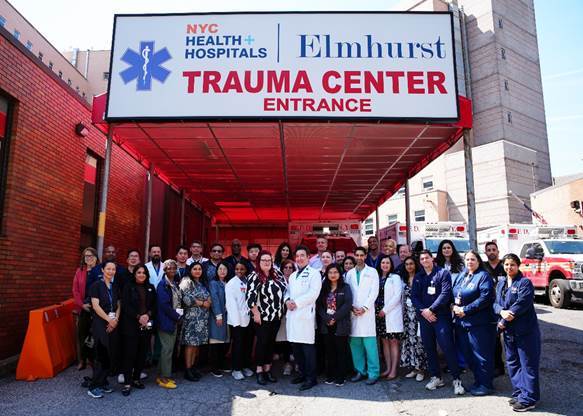We all know about the potentially harmful effects of stress. Ongoing stress can leave us more susceptible to physical and psychological illnesses including high blood pressure, heart disease, anxiety and depression.
Stress is also linked to another surprising problem – vision loss. A condition called central serous retinopathy, or CSR, is a disease that causes fluid to build up under the retina, the back part of the eye that sends sight information to the brain. It may be caused by emotional stress.
“CSR primarily affects men, ages 20 to 50,” says Dr. Mark Fleckner, a Fresh Meadows ophthalmologist specializing in diseases of the retina. “Studies have found that people with aggressive, "type A" personalities who are under a lot of pressure may be more likely to develop the condition,” says Fleckner, who also has an office in Garden City, Long Island.
Thirty-eight year-old Armando Tejada of Whitestone woke up one morning and couldn’t see well out of his right eye. His vision had always been 20/20 in both eyes, so it was a frightening situation. He made an appointment with Fleckner, who, after the eye exam, asked him if he had been experiencing a lot of stress.
It turned out that in the last few years Tejada had lost a business, had gone through a divorce and was working two jobs. He couldn’t sleep at night, was stressed-out and had a lot of anxiety, but he kept up his hectic schedule. Fleckner advised him to make some changes to lower his stress level for the sake of his vision and his overall health.
Tejada says the vision loss was a wake-up call.
“I finally realized I was trying to do too much and that I needed to do something to take life easier,” he said. He decided to cut back on work hours, and now works at one steady job as a restaurant manager. He has changed his lifestyle, making a conscious effort to stop worrying. He goes for massages to help him relax.
It has helped. He first saw his eye doctor in September, and now Tejada’s vision is back to normal.
“Sometimes people experiencing blurred vision think they need glasses or a new prescription. It’s important to see a doctor to make sure it isn’t a more serious problem,” Fleckner says.
Symptoms of CSR include:
? Dim and blurred blind spot in the center of vision
? Distortion of straight lines with the affected eye
? Objects appearing smaller or farther away with the affected eye
? Colors not appearing as vivid and difficulty distinguishing between colors
The doctor can usually diagnose CSR after taking a medical history and dilating the eye and performing an eye exam. A test called fluorescein angiography confirms the diagnosis. The test entails the injection of a dye into a vein in the arm. The dye quickly passes through the circulation to the eye and photographs are taken to examine the retina. A newer noninvasive test, Optical Coherence Tomography (OCT), can also be used to detect the presence of fluid.
Fleckner says CSR often resolves on its own within a few months without treatment, but it’s important for people to deal with whatever is stressing them out so the problem doesn’t come back. If a patient has more severe leakage and more serious visual loss, or if the disease does not resolve on its own, he may be helped by laser treatment or photodynamic therapy to seal the leak and attempt to restore vision.
Although uncommon, the condition may also be caused by using oral steroid medication, so the patient should stop using them, if possible.
Most individuals recover good vision without treatment, although it’s sometimes not as good as it was before the condition occurred.
The disease returns in up to half of all patients, according to Fleckner, so it’s important to avoid stress.




































